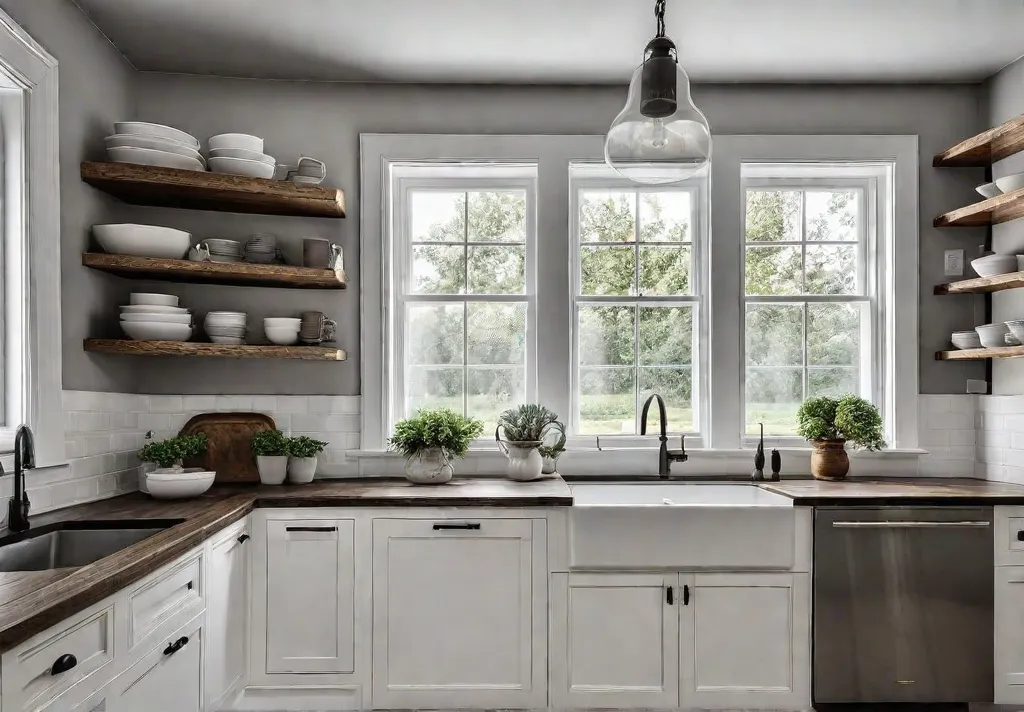Do you ever find yourself longing for a cozy, inviting kitchen that feels plucked straight from the pages of a farmhouse-style magazine? If so, you’re not alone. Farmhouse kitchen designs have gained immense popularity in recent years, captivating homeowners with their unique blend of modern functionality and traditional charm.
These warm and welcoming spaces evoke the nostalgic comforts of country living, making them the heart of the home. A recent survey found that 40% of homeowners would choose a farmhouse style if given the option. And with Google searches for “farmhouse kitchens” steadily rising over the past decade, it’s clear that this trend isn’t going anywhere anytime soon.
So, what exactly defines a farmhouse kitchen? Think natural materials like wood and stone, neutral color palettes, and vintage-inspired accents that create an authentic, lived-in feel. From shaker-style cabinets and farmhouse sinks to open shelving and rustic hardware, these design elements come together to form a beautiful and functional space.
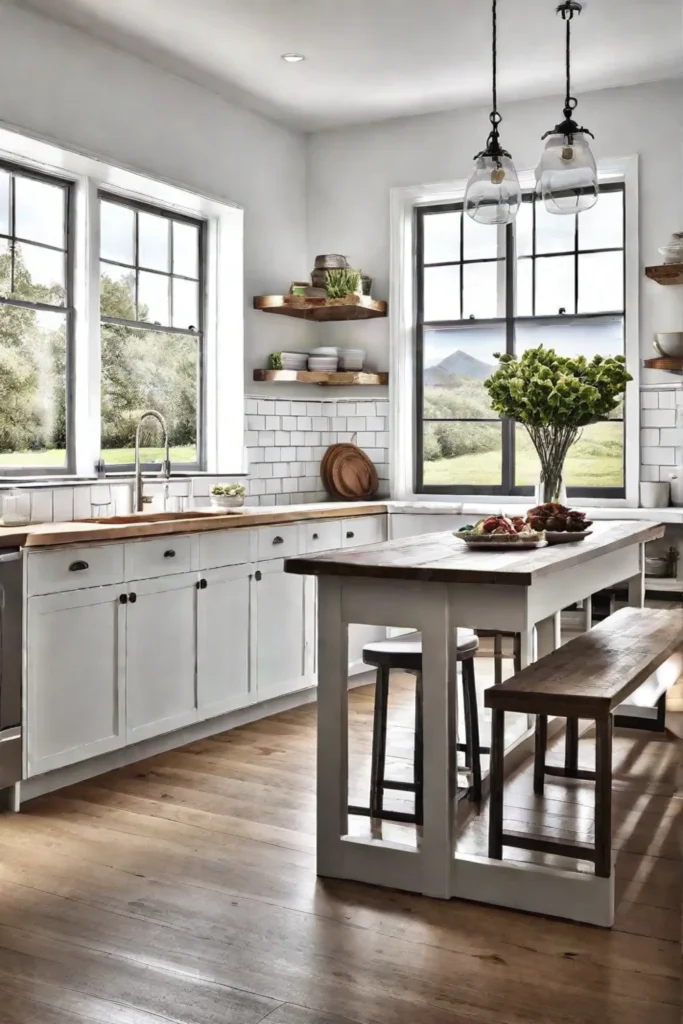
If you’re a beginner looking to transform your kitchen into a cozy farmhouse haven, you’ve come to the right place. In this comprehensive guide, we’ll walk you through the process, from understanding the core principles of farmhouse design to planning your remodel and selecting the perfect finishing touches. Get ready to roll up your sleeves and dive into farmhouse kitchen bliss!
Section 1 – Understanding Farmhouse Kitchen Design
Let’s start by exploring the essence of farmhouse kitchen design. This aesthetic is deeply rooted in the rural, agrarian lifestyle of the past, where the kitchen was the heart of the home. Over time, the farmhouse style has evolved, blending traditional elements with modern conveniences to create a timeless and on-trend look.
At the core of the farmhouse kitchen are natural materials, vintage-inspired accents, and a warm, inviting atmosphere. Think exposed wooden beams, shiplap walls, and a neutral color palette of whites, grays, and muted greens. These design choices work together to evoke a sense of rustic charm and comfort.
Regarding the key design elements, shaker-style cabinets, farmhouse sinks, and open shelving often define farmhouse kitchens. Shaker-style cabinets, with simple lines and recessed panels, provide ample storage while maintaining a classic, timeless look. Farmhouse sinks offer both practicality and visual appeal with their deep, oversized basins. Open shelving allows you to showcase your favorite dishes, cookbooks, and decorative items, adding character and accessibility to the space.
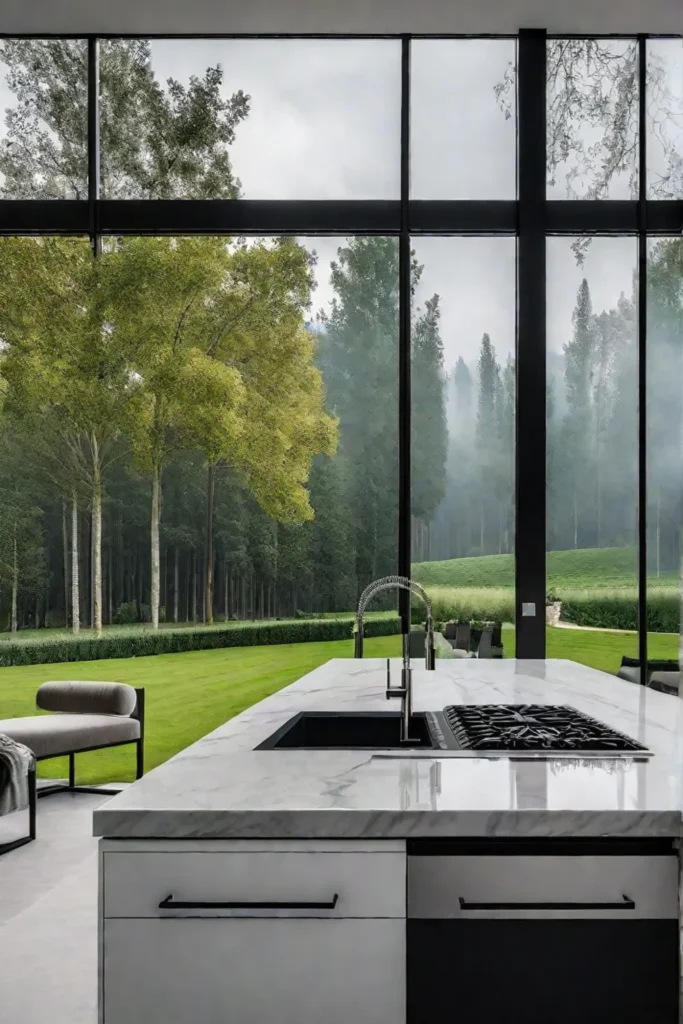
Functionality is also paramount in a farmhouse kitchen. Efficient layouts, ample counter space, and well-planned storage solutions ensure that these spaces are beautiful and highly practical for everyday use. After all, the farmhouse kitchen is meant to be the heart of the home, where families gather to cook, entertain, and create memories.
As you explore the world of farmhouse kitchen design, you’ll notice that it has evolved, adapting to changing lifestyles and design trends. What started as a reflection of rural living has now found its way into suburban and urban homes as homeowners embrace this style’s cozy, inviting atmosphere.
To incorporate farmhouse touches into your kitchen, consider using natural materials like wood and stone, repurposing vintage or salvaged items, and embracing a neutral color palette. By blending these elements with modern conveniences, you can create a timeless and fresh space.
Section 2 – Assessing Your Kitchen Space
Before diving headfirst into your farmhouse kitchen remodel, it’s important to take a step back and carefully evaluate your existing space. By analyzing your kitchen’s current layout, functionality, and condition, you’ll be able to identify the best opportunities for transformation.
Start by considering the flow and functionality of your kitchen. Ask yourself: Does the current layout allow easy movement between the sink, stove, and refrigerator? Are there any bottlenecks or congested areas where multiple people might struggle to pass through simultaneously? Is the lighting sufficient, or would additional fixtures be necessary? Answering these questions will help you pinpoint areas that could use improvement, both in terms of practicality and aesthetics.
Next, examine the condition of your kitchen’s existing features. Are your cabinets outdated or damaged? Do the countertops show signs of wear and tear? Is the flooring in need of replacement? Evaluating the state of these elements will help you determine which components require attention during the remodeling process.
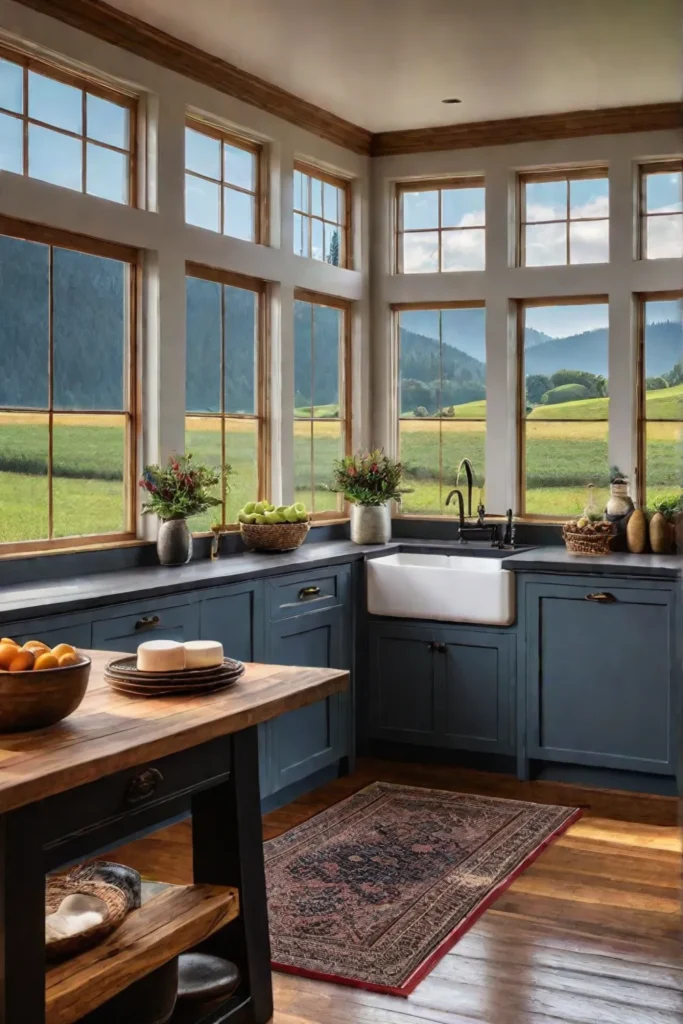
For example, if your cabinets are in good shape but the finish looks tired, a fresh coat of paint in a farmhouse-inspired color could breathe new life into them. On the other hand, if your countertops are made of dated laminate, upgrading to a natural material like butcher block or soapstone would better align with the farmhouse aesthetic.
As you assess your kitchen, note any unique architectural features, such as exposed beams or reclaimed wood, that could be incorporated into your farmhouse-style design. These elements can add instant character and charm to your space, making them valuable assets.
You can develop a clear action plan for your farmhouse remodel by carefully evaluating your existing kitchen. This step-by-step approach will ensure that you make the most of your available space and resources, ultimately creating a beautiful and highly functional kitchen.
Section 3 – Planning Your Farmhouse Kitchen Remodel
With a solid understanding of farmhouse kitchen design and a clear assessment of your existing space, it’s time to start planning your remodel. The real fun begins here as you dive into the details and bring your vision to life.
One of the first and most important steps is determining a realistic budget. Farmhouse-style kitchens often feature unique materials and design elements, which can significantly impact the overall cost of a remodel. By establishing a budget upfront, you can prioritize the most important features and find creative ways to maximize your investment.
For example, you might splurge on a stunning farmhouse sink but opt for more budget-friendly cabinetry. Or you could scour thrift stores and flea markets for vintage-inspired light fixtures and decor rather than purchasing everything brand new. The key is to strike a balance between your desired aesthetic and your financial constraints.
As you plan your remodel, identify the key design elements you want to incorporate. Some popular farmhouse kitchen features include exposed brick, shiplap walls, large islands, and open shelving. These elements contribute to the overall look and feel of the space and serve practical purposes, such as providing additional storage or work surfaces.
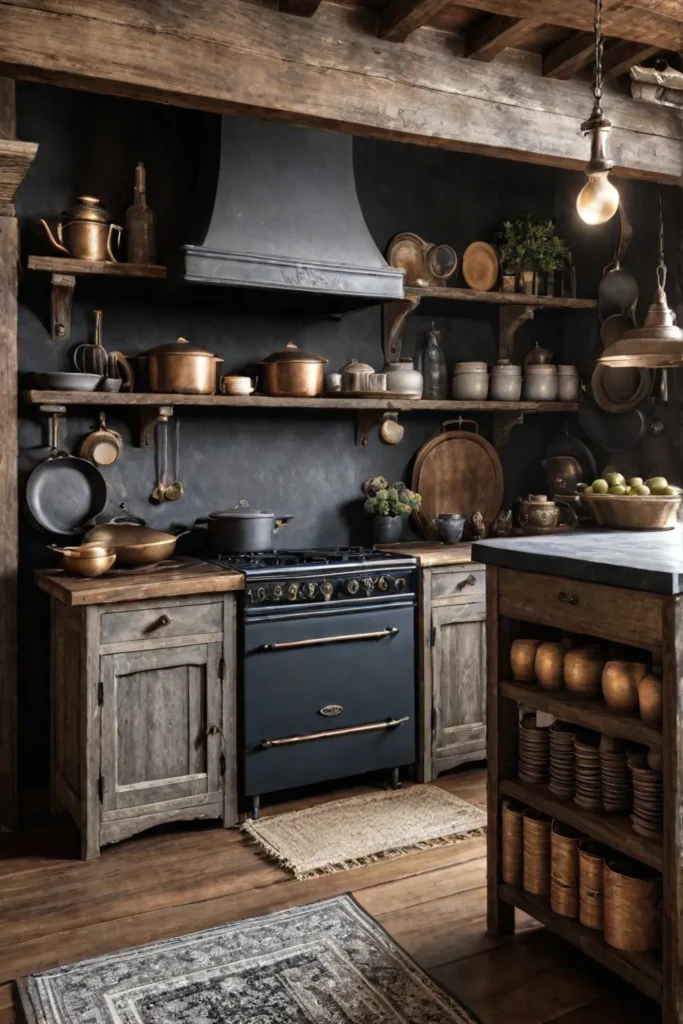
When selecting materials and finishes, consider natural and rustic-inspired options. For example, consider reclaimed wood for your countertops, subway tile for the backsplash, and brushed brass or oil-rubbed bronze hardware. These choices will help you create a cohesive, authentic farmhouse aesthetic that feels timeless and on-trend.
Remember, the planning stage is crucial for ensuring a successful farmhouse kitchen remodel. By taking the time to establish a realistic budget, identify your must-have design elements, and carefully select the right materials, you’ll be well on your way to transforming your kitchen into a cozy, inviting space that truly reflects your style.
Section 4 – Lighting and Fixtures
Lighting and fixtures are pivotal in creating the perfect farmhouse kitchen ambiance. From natural light to task lighting and ambient illumination, each element works together to enhance the overall design and functionality of the space.
Maximizing natural light is a key priority in farmhouse kitchens. Large windows or skylights allow sunlight to flood the room, creating a warm, welcoming atmosphere during the day. Task lighting, such as under-cabinet fixtures or pendant lights over the countertops, can further complement this natural light to provide focused illumination for cooking and food preparation.
Consider incorporating vintage or industrial-inspired lighting elements to achieve the quintessential farmhouse look. Edison bulb pendants, mason jar sconces, and wire basket pendant lights are all popular choices that instantly add character and charm to the space. These unique fixtures not only contribute to the overall aesthetic but also help to create a cozy, inviting ambiance.
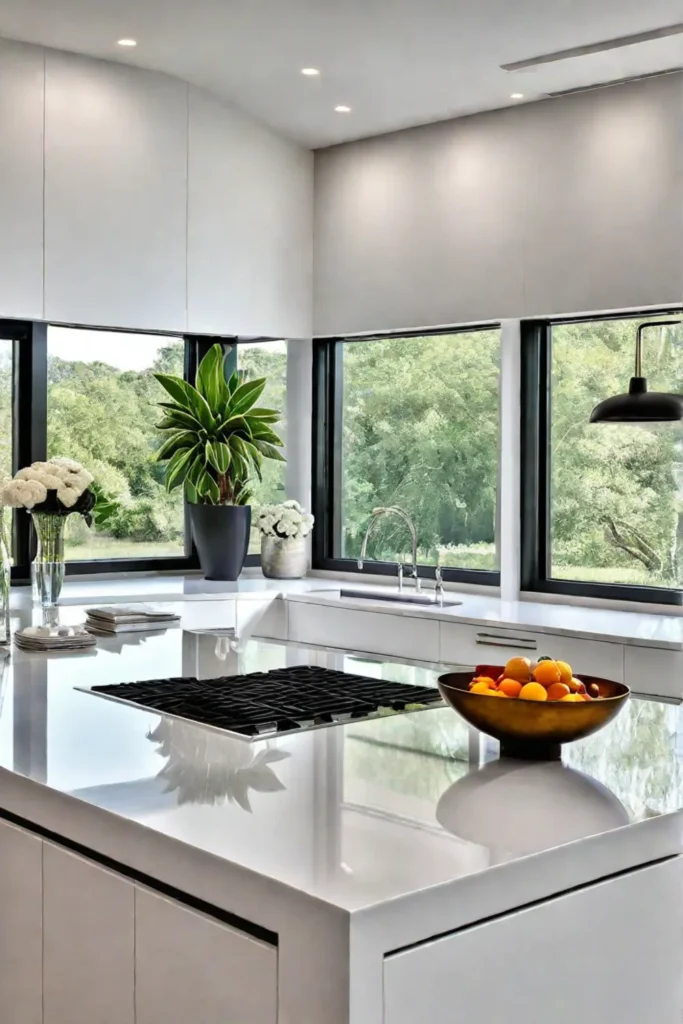
Choose finishes that complement the farmhouse style when selecting hardware and plumbing fixtures. Brass or copper tones add warmth, while brushed nickel or oil-rubbed bronze offers a more industrial-chic vibe. Pairing these fixtures with subway tile or rustic wood countertops can help create a cohesive, well-balanced design.
Remember, the key to nailing the farmhouse lighting and fixtures is to layer different illumination sources. Start with natural light, then add task lighting to illuminate specific work areas, and finally, incorporate ambient lighting through chandeliers, wall sconces, or floor lamps to create a cozy, inviting glow throughout the space.
By carefully considering the lighting and fixture choices in your farmhouse kitchen remodel, you can transform the space into a warm, welcoming hub that feels functional and visually stunning.
Section 5 – Cabinetry and Storage Solutions
Cabinetry and storage solutions are crucial in defining a farmhouse kitchen’s overall aesthetic and functionality. From the style of your cabinets to the unique features you incorporate, these elements can make or break the cohesive look you’re trying to achieve.
Regarding cabinet styles, shaker-style cabinets are a quintessential choice for farmhouse kitchens. With their clean lines and recessed panels, these cabinets provide a timeless, classic look that complements the rustic charm of the farmhouse aesthetic. Alternatively, beadboard cabinets can also add a touch of country-inspired character to your space.
Consider incorporating open shelving into your design for a more open and airy feel. This allows you to showcase your favorite dishware and decorative items and contributes to the casual, lived-in vibe that defines the farmhouse style.
Beyond the cabinet style, unique storage features can also elevate the practicality and charm of your farmhouse kitchen. Pull-out pantries, for example, offer easy access to stored items without sacrificing valuable floor space. Custom-built organizers, such as drawer dividers and spice racks, can help keep your countertops clutter-free and your kitchen well-organized.
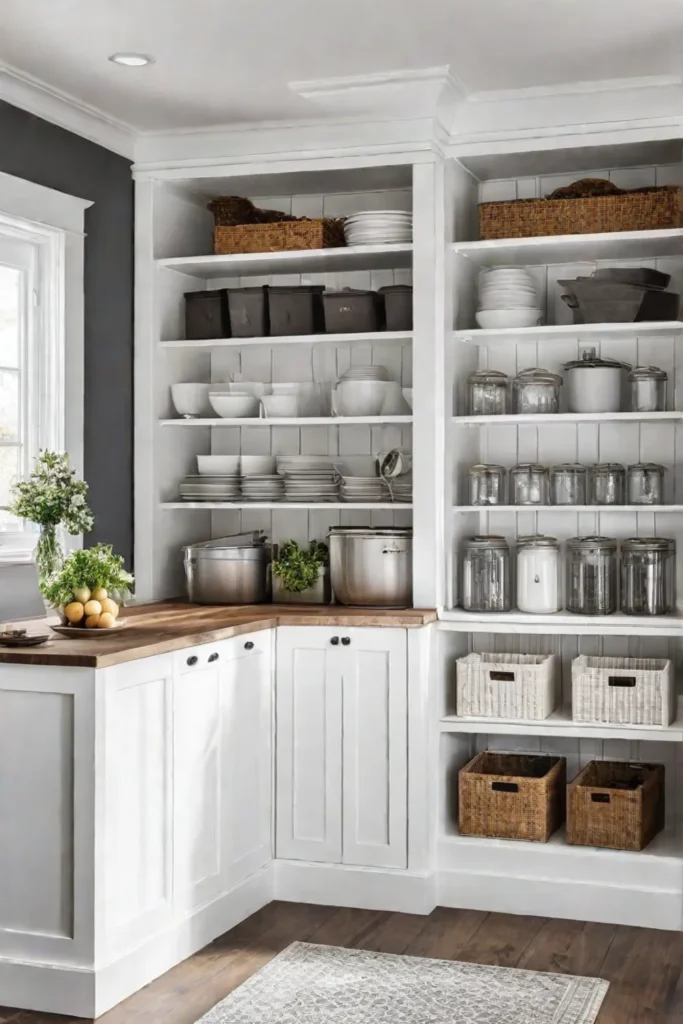
When selecting hardware and finishes for your cabinetry, look for options that complement the overall farmhouse aesthetic. Brass or oil-rubbed bronze knobs and pulls can add warmth, while natural wood tones like oak or pine can help to create a cohesive, rustic look.
Even in smaller kitchens, there are plenty of ways to maximize storage and organization. Vertical space with open shelving, deep drawers, and pull-out trays can help you maximize your available square footage while maintaining the farmhouse charm.
By carefully considering the cabinetry and storage solutions in your farmhouse kitchen remodel, you’ll be able to create a space that is not only visually appealing but also highly functional, allowing you to transition between cooking, entertaining, and everyday living seamlessly.
Section 6 – Countertops and Backsplashes
Countertops and backsplashes are essential elements in any kitchen and play a particularly important role in defining the farmhouse aesthetic. These design features contribute to the overall visual appeal of the space and serve practical purposes, such as durability and ease of maintenance.
Regarding countertop materials, farmhouse kitchens often feature natural, rustic-inspired options that add warmth and character to the space. Butcher block countertops, for instance, are a classic choice, providing a durable work surface while evoking a sense of timeless charm. Soapstone is another popular option, offering a timeless, classic appearance and exceptional resistance to heat, scratches, and stains.
For a more contemporary twist on the farmhouse look, quartz countertops can be an excellent choice. These engineered surfaces come in various colors and patterns, allowing you to achieve a cohesive, visually striking design.
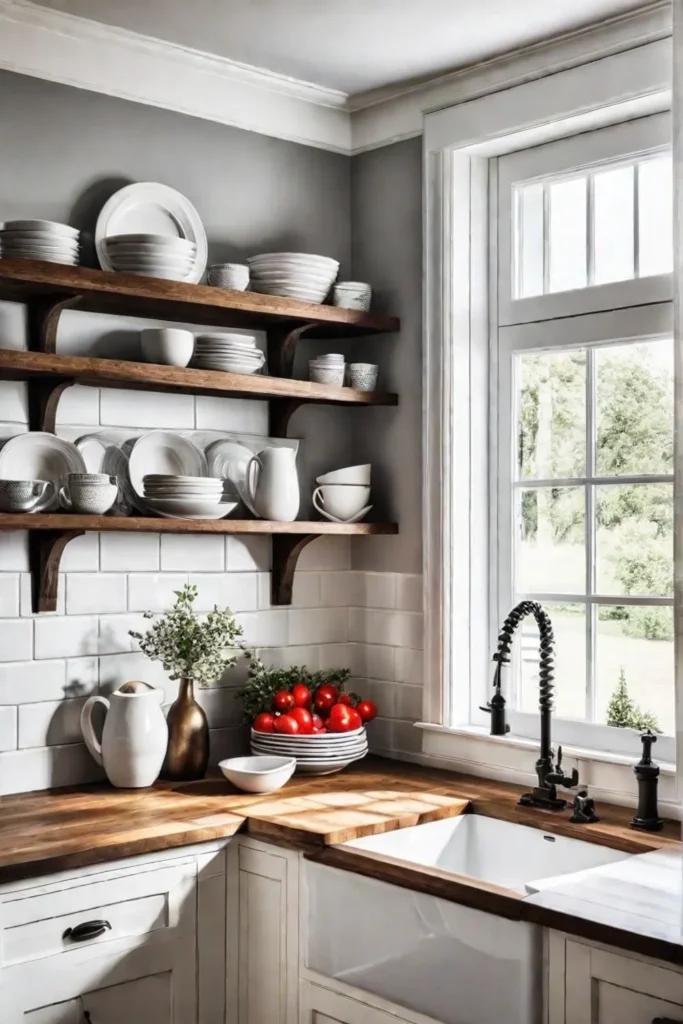
The backsplash is another key element that can significantly impact the overall aesthetic of your farmhouse kitchen. Subway tile is a perennial favorite, with its clean, classic lines and versatility in color and finish. Shiplap, a type of wooden paneling, can also add a rustic, country-inspired touch to the space. For a truly unique look, consider incorporating a brick backsplash, which can lend your kitchen an authentic, vintage-inspired feel.
When selecting your countertop and backsplash materials, consider factors such as durability, maintenance, and how well they complement the overall farmhouse design. By striking the right balance between functional and aesthetic considerations, you can create a cohesive, visually stunning farmhouse kitchen that will be the envy of all your friends and neighbors.
Section 7 – Flooring and Finishes
As you plan your farmhouse kitchen remodel, don’t forget the importance of flooring and other finishing touches. These elements can significantly impact the overall look and feel of your space, helping to tie the entire design together.
Several flooring options can work well in a farmhouse kitchen. Reclaimed or distressed hardwood floors are popular, as they instantly add character and warmth to the room. The natural patina and imperfections of these wood floors perfectly complement the rustic charm of the farmhouse aesthetic.
Tile is another versatile option, with ceramic or porcelain tiles that mimic the look of wood or natural stone. These durable, low-maintenance flooring solutions can provide a beautiful, timeless foundation for your farmhouse kitchen.
Consider luxury vinyl plank (LVP) flooring for a more budget-friendly alternative. Thanks to technological advancements, LVP can now closely resemble the appearance of real wood without the high cost or maintenance requirements.
Beyond the flooring, other finishing touches can also contribute to the overall farmhouse feel of your kitchen. Shiplap walls, for example, are a quintessential farmhouse element, adding texture and character to the space. Exposed wooden beams, whether original or added during the remodel, can also lend an air of rustic elegance to the room.
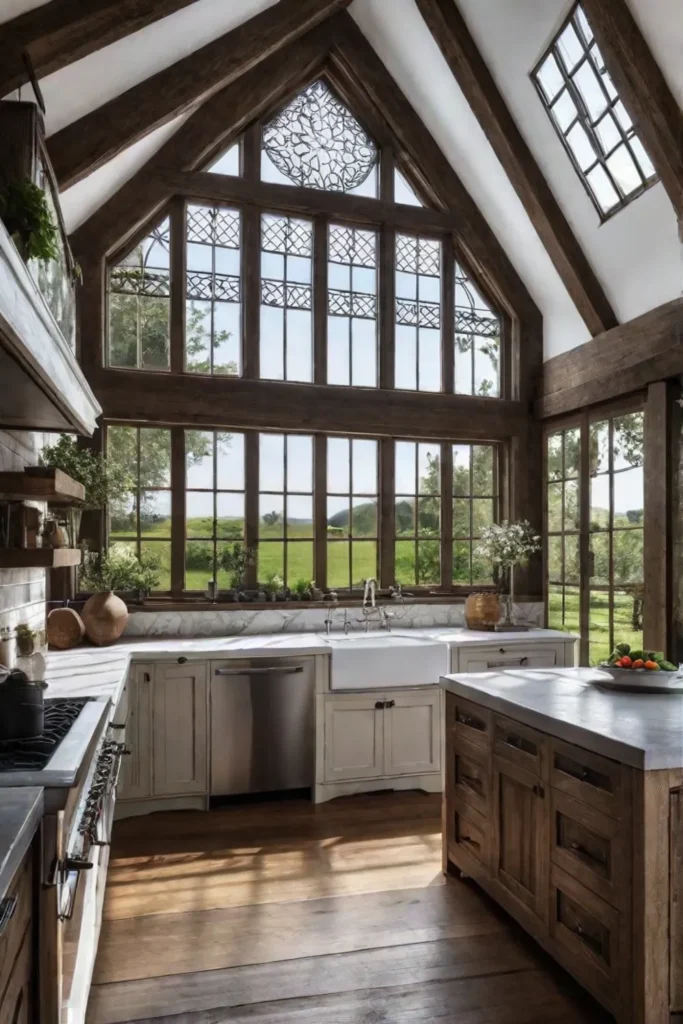
When incorporating these unique finishing touches, it’s important to maintain a cohesive design throughout the kitchen. Ensure that the colors, textures, and materials you choose work together seamlessly, creating a harmonious and visually appealing space.
Remember, the goal is to craft a farmhouse kitchen that looks beautiful and feels like a warm, inviting hub for your family and friends to gather. By selecting the right flooring and finishes, you’ll be well on your way to achieving that cozy, lived-in vibe that defines the farmhouse aesthetic.
Section 8 – Decorating and Personalization
As you near the end of your farmhouse kitchen remodel, it’s time to turn your attention to the final touches – decorating and personalization. This is where you can make the space your own, infusing it with your unique style and personality.
Farmhouse kitchens often feature a mix of old and new, with homeowners incorporating vintage or repurposed items to add character and charm. Antique signs, rustic accents, and salvaged furniture can all contribute to the authentic, lived-in feel of the space. These one-of-a-kind pieces look beautiful and tell a story, adding depth and personality to your kitchen.
But it’s not just about the decor – personal touches can also make a big impact. Display sentimental items like family heirlooms or cherished photographs to create a warm, inviting atmosphere. These small details will make your farmhouse kitchen feel unique and reflect your family’s history and values.
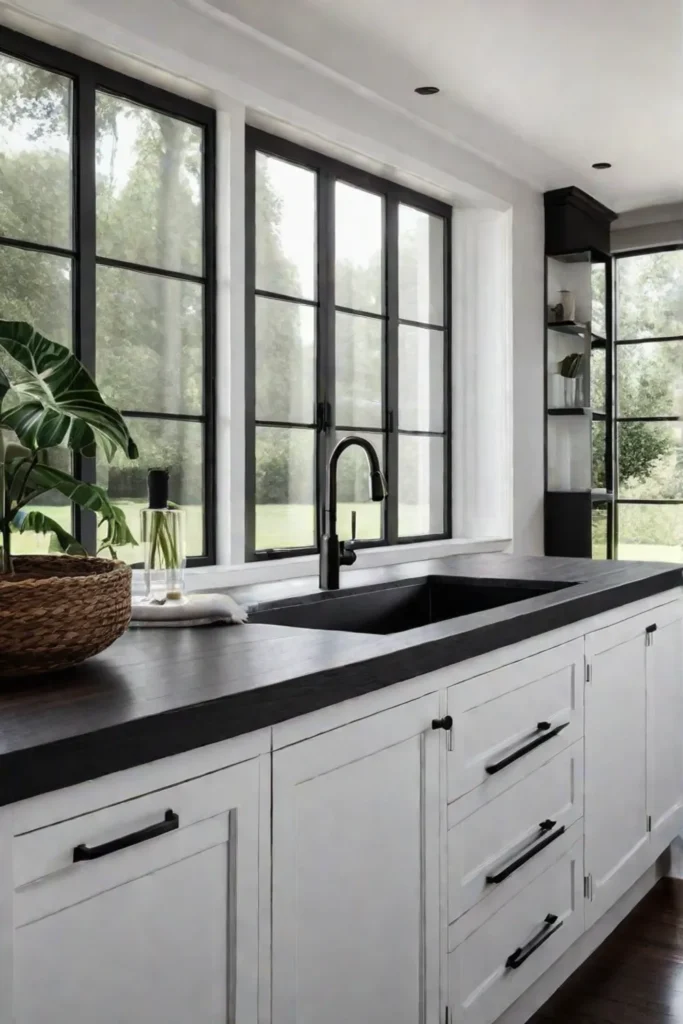
To further enhance the cozy, welcoming vibe, consider incorporating natural textiles, greenery, and other decorative elements throughout the space. Plush throw pillows, soft area rugs, and lush potted plants can all contribute to the overall ambiance, making your kitchen space as beautiful as it is functional.
As you personalize your farmhouse kitchen, remember the importance of balance and harmony. While filling the space with every farmhouse-inspired item you come across is tempting, it’s important to curate your decor thoughtfully, ensuring that each element complements the others and contributes to the overall design.
By embracing the mix of old and new, incorporating personal touches, and layering warm, inviting elements, you can transform your farmhouse kitchen into a true reflection of your style and personality. This is where you’ll create countless memories, from family gatherings to quiet moments of solitude—make it a place that feels like home.
Conclusion
In this comprehensive guide, we’ve explored the world of farmhouse kitchen remodeling, uncovering the core principles, key design elements, and practical considerations that define this beloved aesthetic. From understanding the origins of the farmhouse style to planning your remodel and selecting the perfect finishing touches, you now have the knowledge and tools to transform your kitchen into a cozy, inviting haven.
Remember, the farmhouse look is all about embracing a sense of timeless charm and rustic elegance. By incorporating natural materials, vintage-inspired accents, and a neutral color palette, you can create a classic and on-trend space. And don’t forget the importance of functionality – a farmhouse kitchen should be a practical, hardworking space that meets the demands of your everyday life.
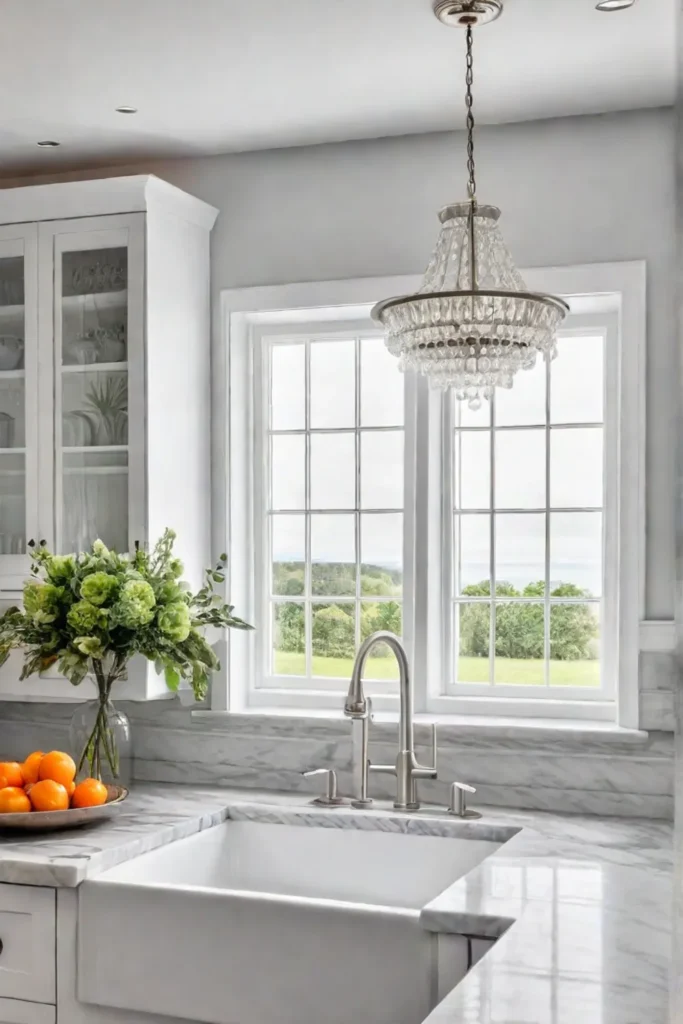
As you embark on your farmhouse kitchen remodeling journey, don’t be afraid to get creative and put your unique spin on the design. Mix and match different elements, experiment with textures and finishes, and, most importantly, have fun with the process. After all, your farmhouse kitchen should
